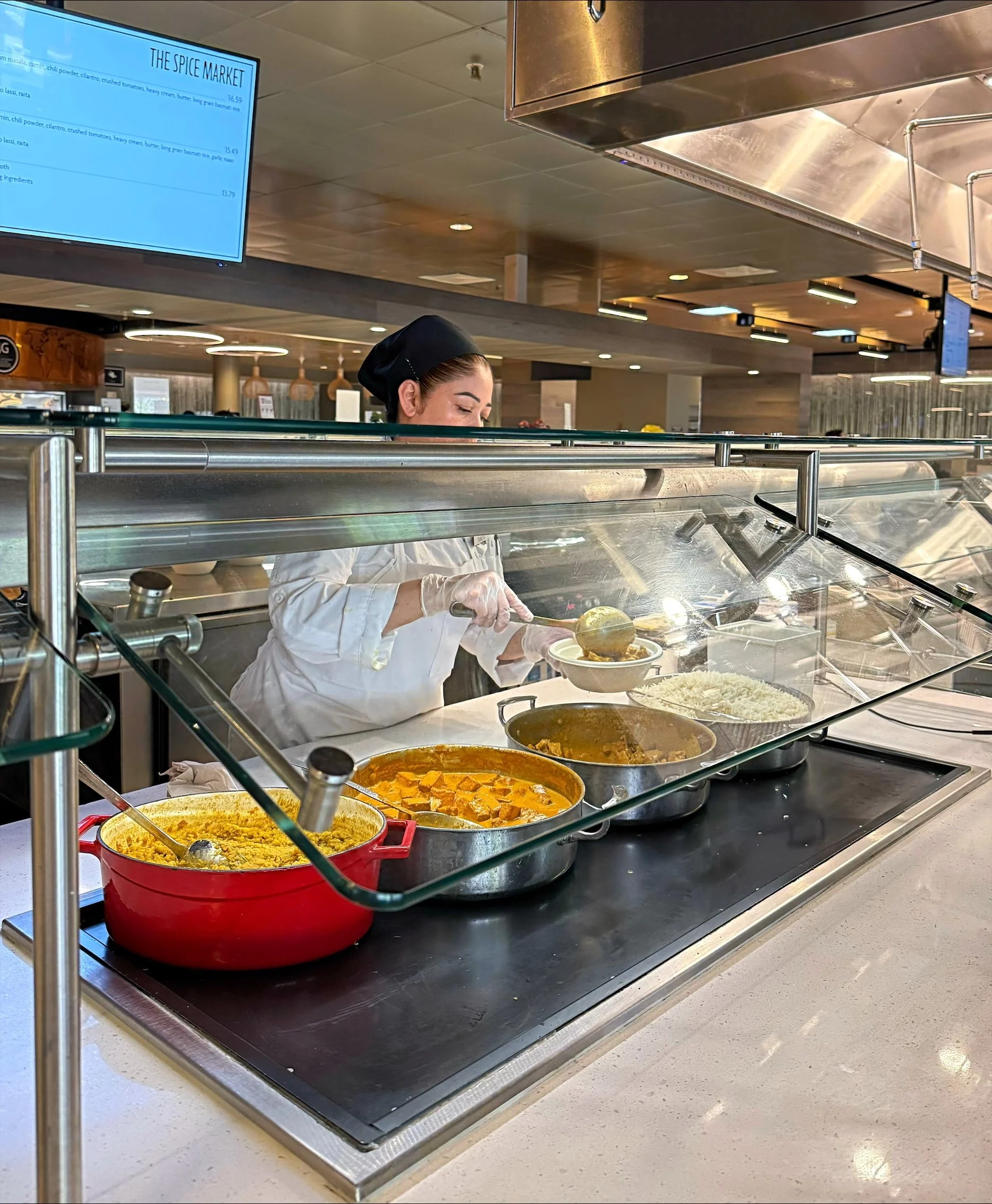Tariffs Set to Raise Campus Food Prices
Benson Dining Hall’s Spice Market dining station. Photo by Sophie Ziedalski
Rising costs are making their way to students’ plates at Santa Clara University.
Although the Trump administration has paused the proposed 25% tariff on Canadian and Mexican imports, part of the broader “Liberation Day” tariffs, for 90 days, ongoing economic uncertainty continues to drive up costs nationwide. Campus dining could soon feel the impact, with key staples like avocados, tomatoes, cheese, bananas, and yogurt potentially facing price increases. As food prices climb, so do student concerns about the toll these tariffs could take on their well-being.
“Students already have limited access to healthy options, so higher costs could take a toll on both student health and their wallets, especially for those with dietary restrictions,” said Annie Schloss ’27, a public health major. “If food prices in Benson go up, the meal plan should increase dining points accordingly.”
Bon Appétit Management Company, which operates the University’s dining services, is working with purchasing partner Foodbuy, North America's largest foodservice procurement organization, to secure long-term pricing contracts to help manage cost increases. Higher prices may remain because of the elevated cost of sourcing imported ingredients.
The Cellar Market, where students frequently purchase snacks and grab-and-go items, is also expected to be affected by the increased costs. According to Harvey Smith, resident district manager with Bon Appétit at Santa Clara University, students may experience changes in both pricing and menu variety as imported staples become more expensive or less readily available.
Mexico accounts for roughly 40% of imported fruits and vegetables in North America, according to the Fresh Produce Association of the Americas. “You can’t put an extra 10 or 20 or 30% in a cost, and it just get absorbed,” produce executive John Pandol told The Wall Street Journal.
One initiative Bon Appétit has undertaken is expanding its Farm to Fork program, a companywide effort requiring at least 20% of ingredients be purchased from small, local producers within 150 miles of campus kitchens. Harvey explains that this shift aims to reduce reliance on imports, stabilize supply and feature more seasonal ingredients.
“We’re committed to balanced, high-quality meals, even as costs shift,” Smith said.
Santa Clara University Dining Services also uses the Consumer Price Index to determine food pricing, which tracks average changes in consumer prices, to guide food pricing. Inflation driven by tariffs has raised that index, further contributing to the anticipated price hikes.
The University’s dining services says they will notify students of any changes to pricing or service. If tariffs continue, longer-term adjustments may include smaller portion sizes or simplified menus to reflect more locally available foods. Despite the challenges, Smith emphasized that student affordability and meal quality remain top priorities.
As global trade policy continues to shift, its impact becomes more visible in everyday campus life. What ends up in the dining hall is increasingly influenced not only by chefs and suppliers but also by international economic decisions.
